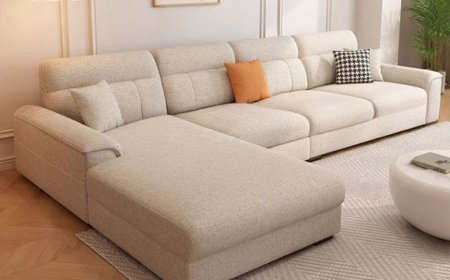Understanding the Importance of a Comfortable Office Chair
A comfortable office chair plays a pivotal role in maintaining health, productivity, and workplace satisfaction. Whether youre working from home or in a corporate setting, sitting for long hours demands proper support for your spine, arms, and legs. An ergonomic office chair doesnt just provide physical comfortit also significantly influences mental focus. Unlike standard chairs, a well-designed office chair helps distribute body weight evenly, reduces pressure on joints, and minimizes the risk of developing musculoskeletal disorders. Employees who use high-quality office chairs report fewer back problems and higher productivity. Given how sedentary work life has become, investing in a good office chair isnt a luxury but a necessity. Most health professionals agree that the ideal office chair should have adjustable features, lumbar support, a breathable backrest, and sufficient padding. These elements ensure that individuals can customize the chair to suit their posture and body type, promoting a healthier sitting position throughout the day.
Key Features to Look for in an Ideal Office Chair
When choosing an office chair, certain features should never be compromised. The most important of these is ergonomic adjustability. This includes seat height, armrest position, backrest recline, and lumbar support. Adjustable height ensures that your feet rest flat on the floor, keeping your thighs horizontal and arms even with the height of the desk. Armrests that adjust up and down as well as inward and outward reduce strain on your shoulders and neck. Another essential feature is the lumbar support which helps maintain the spines natural curve and prevents lower back pain. Swivel functionality and smooth-rolling casters enhance mobility, allowing users to move around their workspace without unnecessary strain. Additionally, the seat cushion should be dense yet soft, providing all-day comfort. Material also plays a key rolemesh backs offer ventilation, while leather or fabric seats provide cushioning and style. Ultimately, a good office chair should feel like a natural extension of your body rather than a tool you are constantly adjusting.
Health Benefits of Using an Ergonomic Office Chair
One of the most compelling reasons to invest in a high-quality office chair is its long-term impact on health. Poor seating posture over extended periods can lead to a range of issues including chronic back pain, neck stiffness, shoulder fatigue, and even sciatica. An ergonomic office chair is specifically designed to address these concerns by supporting natural body movements and posture. By keeping the spine aligned and reducing pressure on the lower back, these chairs promote better blood circulation and reduce fatigue. The ability to adjust the chair according to your body size and workstation helps minimize repetitive strain injuries (RSI) such as carpal tunnel syndrome. Furthermore, improved posture translates into better breathing and digestion, which many people overlook. Employees using ergonomic office chairs often experience less absenteeism and greater engagement at work. Businesses have started recognizing these benefits and are increasingly investing in ergonomic seating as part of their workplace wellness initiatives.
How Office Chairs Influence Workplace Productivity
The quality of an office chair can directly impact productivity. When employees are comfortable and free from physical pain, they are more likely to stay focused on their tasks. Discomfort from a poorly designed chair can be distracting and lead to frequent breaks, shifting postures, or even the need to leave work early. On the other hand, ergonomic office chairs can boost morale and create a more positive work environment. In many modern workplaces, companies have adopted open-plan designs, flexible seating, and home-office setups. In such settings, having a consistent and supportive office chair is crucial. It becomes an integral part of daily performance, especially for jobs that require long hours of sitting. In fact, research shows that companies investing in ergonomic furniture experience a noticeable uptick in employee performance and satisfaction. Providing proper seating isn't just about aestheticsits about empowering employees to do their best work without being hindered by physical discomfort.
Types of Office Chairs and Their Unique Applications
The market offers a wide variety of office chairs, each designed to serve specific needs. Task chairs are common in most offices and offer basic ergonomic features suitable for short to moderate sitting durations. Executive chairs are more luxurious, often made from leather with plush padding and advanced ergonomic capabilities, ideal for senior-level professionals. Then there are mesh chairs, which provide excellent airflow, making them suitable for warm environments. Gaming chairs have also found their way into office spaces, thanks to their comfort-focused design and adjustable components. Saddle chairs and kneeling chairs cater to more niche requirements, promoting posture and core engagement. For those who prefer active sitting, balance ball chairs and wobble stools offer alternatives that encourage movement. Choosing the right type depends on factors such as work nature, sitting duration, available space, and personal preferences. No matter the type, the chair must align with the principles of ergonomics to offer maximum benefits.
Tips for Maintaining Your Office Chair for Long-Term Use
Buying a quality office chair is just the beginning; maintaining it properly ensures that it serves you well for years. Regular cleaning is importantfabric chairs should be vacuumed to remove dust and debris, while leather or mesh chairs can be wiped down with a damp cloth. Inspect mechanical components like the gas lift, wheels, and tilt mechanism periodically to ensure they are functioning smoothly. Lubricate moving parts as necessary to prevent squeaks or resistance. If the chair has adjustable components, avoid over-tightening knobs or forcing levers, as this can cause breakage. Consider placing a chair mat under rolling chairs to protect your flooring and reduce strain on the wheels. Its also wise to follow the manufacturer's weight and usage guidelines to avoid wear and tear. With a little attention, your office chair can maintain its support, comfort, and appearance for many years, making it a worthwhile investment in your work environment.
Creating a Healthy Work Environment with the Right Chair
A well-chosen office chair contributes not only to individual comfort but also to the overall health of a workspace. Companies today are prioritizing wellness programs that focus on both physical and mental well-being. Ergonomic seating is a foundational element of such initiatives. Alongside standing desks, monitor risers, and keyboard trays, the office chair serves as a core component of ergonomic infrastructure. It sets the tone for how seriously an organization takes the comfort of its employees. For home offices, choosing the right chair is equally important, as remote work becomes a permanent reality for many. Pairing your chair with proper desk height, monitor placement, and lighting completes the setup for optimal performance. More than ever, employers and individuals alike are realizing that comfort is non-negotiable. Investing in a good chair goes beyond aesthetics or styleit's about crafting a healthier, more focused, and more effective work experience for everyone involved.
Conclusion
In todays dynamic work culture, a supportive and adjustable office chair is essential for maintaining productivity, health, and overall workplace satisfaction. Choosing the right chair, maintaining it well, and understanding its importance in the broader scope of wellness are key to creating a balanced work environment. Whether in a corporate office or a home workspace, the value of ergonomic seating cannot be overstated. For anyone serious about their comfort and efficiency, the right office chair is an investment that pays for itself many times over. When choosing quality, reliability, and comfort, trust office chair to deliver lasting performance and ergonomic excellence.






































